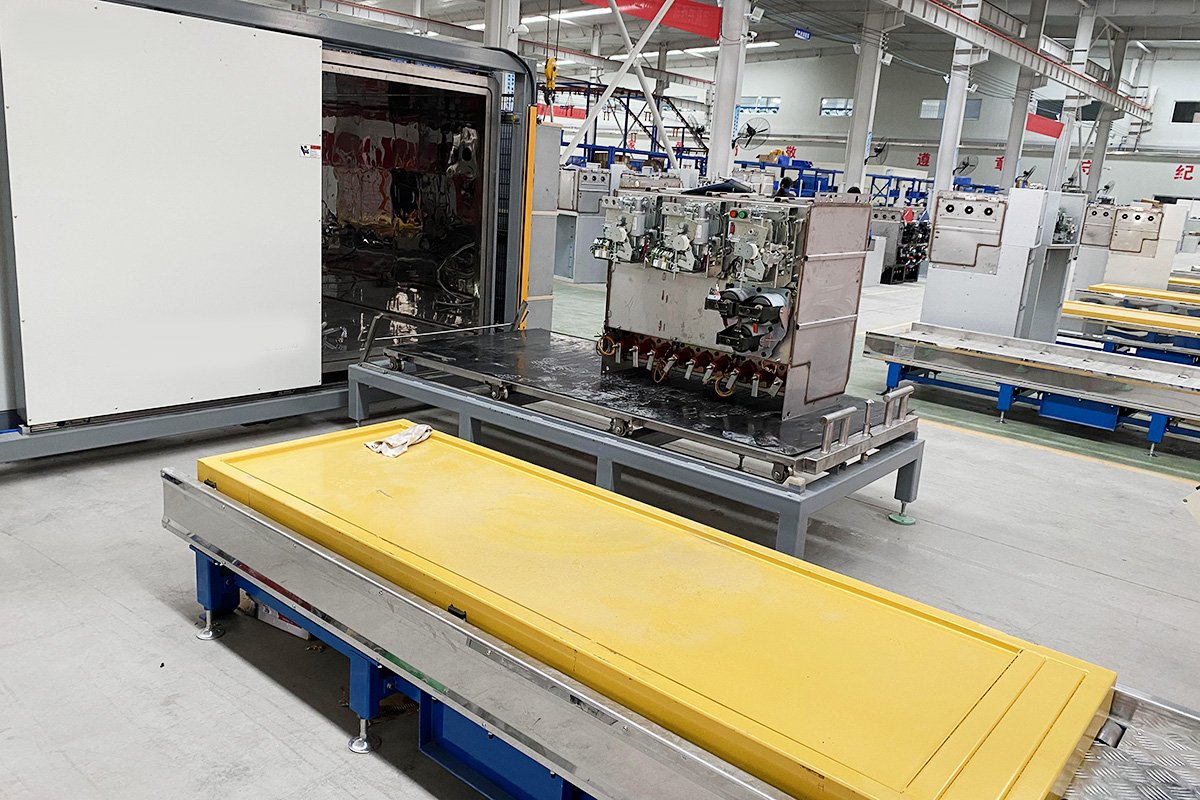Helium Leak Detection Equipment for Electrical Equipment

Helium leak detection equipment for electrical power devices is a specialized precision instrument designed for detecting minor leaks in electrical power equipment. It uses helium gas as a tracer gas and employs mass spectrometry technology to locate and measure leaks in sealed systems or equipment.
The working principle of a helium mass spectrometer leak detector is based on the principles of mass spectrometry. In the instrument, a filament emits electrons that collide with residual gas molecules and helium gas that has entered through the leak in the item being tested within the ionization chamber, causing them to ionize. These ions are accelerated into a magnetic field and, due to the Lorentz force, they follow a curved path. By changing the acceleration voltage, ions of different masses can be made to pass through the magnetic field and the receiving slit to reach the receiving electrode, where they are detected, resulting in a mass spectrum. During operation, the ion acceleration voltage is set to target the helium peak, and the receiving electrode collects only helium ions. The resulting helium ion current is amplified to indicate the leak rate.
There are typically two types of leak detection methods for helium mass spectrometer leak detectors: conventional leak detection and reverse diffusion leak detection. Reverse diffusion leak detection is based on the principle that molecular pumps have different compression ratios for gases of different molecular weights, making it particularly suitable for detecting large containers or specimens with significant leaks. Leak detection methods include spray, suction, bell jar, and back pressure methods, and the choice of method depends on the structure of the item being tested, the economic benefits of leak detection, and the nature of the leak detection system.
Helium leak detection technology has been widely applied across various industries, such as semiconductors, electrical power, refrigeration, aerospace, nuclear energy, vacuum technology, healthcare, and automotive, playing a crucial role in ensuring the performance and safety of equipment.
The helium leak detector features high sensitivity, rapid response, easy operation, and portability. Modern helium leak detectors often come with a touch screen interface and intuitive user menus, simplifying the setup and leak detection process. Some models are designed as portable devices for use in different working environments.
Regular maintenance of the helium leak detector is required to ensure its normal operation and accuracy, including changing the mechanical pump oil, cleaning the molecular pump, and replenishing lubricating oil. When operating, users need to follow the instructions for tuning the helium peak and calibrating the leak rate to ensure the accuracy of the test results.
